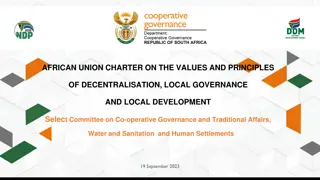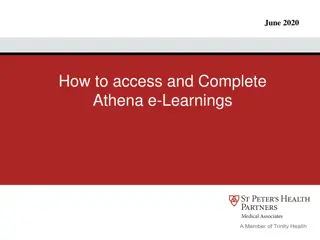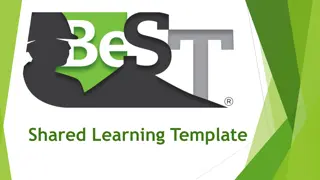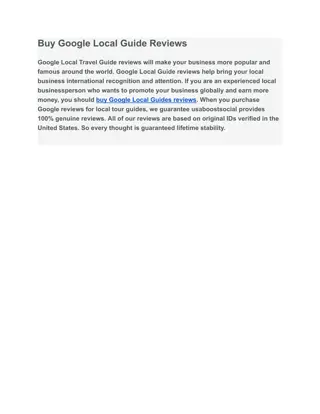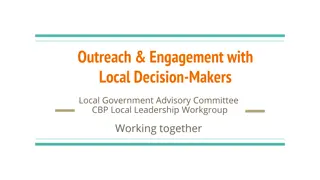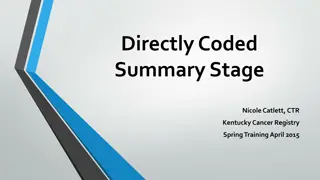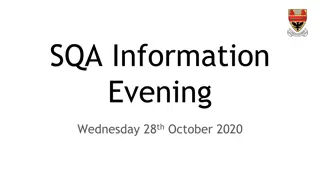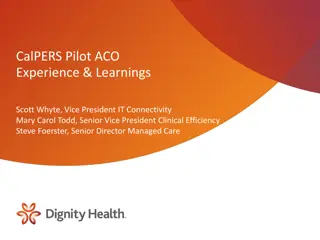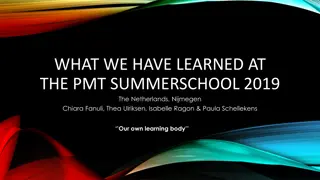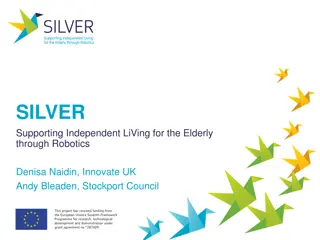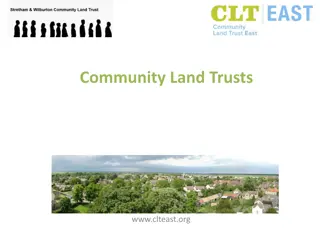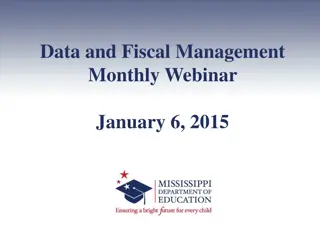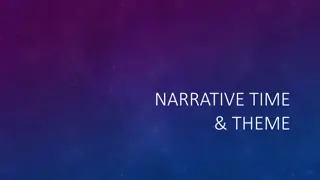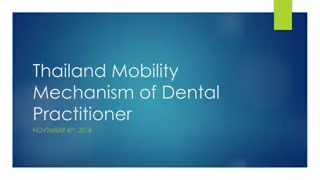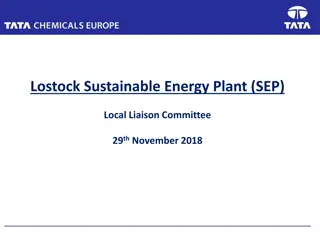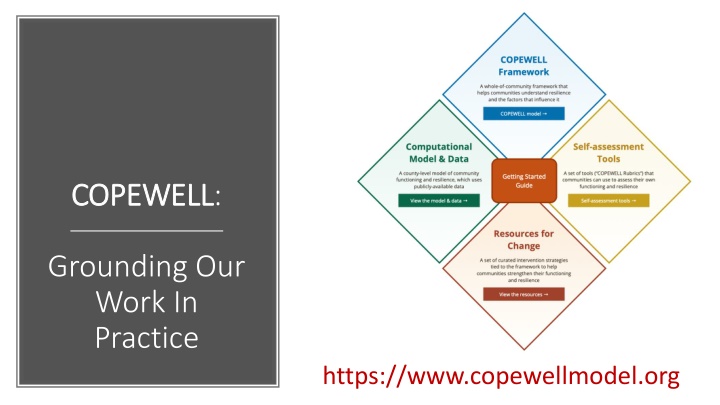
Grounding COPEWELL Model in Community Resilience Practice
"Explore how COPEWELL model guides communities in understanding, assessing, and enhancing resilience. Learn about the goals, development process, and key takeaways from practical implementation experiences. Discover how COPEWELL fosters disaster resiliency and community functioning through self-assessment, resource development, and strategic planning."
Download Presentation

Please find below an Image/Link to download the presentation.
The content on the website is provided AS IS for your information and personal use only. It may not be sold, licensed, or shared on other websites without obtaining consent from the author. If you encounter any issues during the download, it is possible that the publisher has removed the file from their server.
You are allowed to download the files provided on this website for personal or commercial use, subject to the condition that they are used lawfully. All files are the property of their respective owners.
The content on the website is provided AS IS for your information and personal use only. It may not be sold, licensed, or shared on other websites without obtaining consent from the author.
E N D
Presentation Transcript
COPEWELL COPEWELL: Grounding Our Work In Practice https://www.copewellmodel.org
COPEWELL Goals Provide communities ways to collectively: Understand resilience and its influencers Spark action for further development Assess community resilience Goal Scoring rubric for local self- assessment ( bottom-up ); Comparative county metrics using national data ( top-down ) Systems dynamic model Facilitation guides for community dialogues Resource
COPEWELL Informed by practitioners Guided by experience with communities
Grounding COPEWELL in Practice Involved those with field experience in model development Fielded early model / held focus groups with: Federal Partners Field Practitioners: Across geographies and sectors Implementation Explorations New York City Chester County (PA) Twin Ports (MN) 6+ additional jurisdictions, 2020-2022
Development of Community Self Assessment Rubrics What has field input led to or changed? Curated Resources Development of Idea Triggers e.g., mapping to use in meeting PHEP HVA requirements Website Getting Started Guide; Videos, Displays, etc.
Things Weve Learned Be scalable (e.g., geoscale, domain, resources, etc.) Resilience can be modeled but is nuanced locally. Systems interact and can be complex. It s about more than the numbers. Usefulness of BOTH standardized data and community self-knowledge / wisdom Advancing resiliency involves engaging across sectors in ways that are constructive, creative, non-judgmental. Things learned in measuring & advancing resilience Curated resources to spark action ideas are useful. Progress is driven by relationships, trust, shared vision. Facilitation / local leadership and support is important. COPEWELL offers opportunity to advance everyday Community Functioning as well as Disaster Resiliency (the two interrelate)
What Communities are Using COPEWELL for Undertaking Disaster Resiliency Self Assessments (single / multiple domain) with a goal of building relationship & sparking action. Helping leaders & partners get their arms around what disaster resilience is and see themselves in it. Funding / grant applications; Targeting resources and support (model output, indicator data) Driving cross jurisdictional discussions; Encouraging regional approaches. Building political support for needed community initiatives (e.g., put efforts in broader context) Engagement of non-traditional partners in resiliency building efforts Strategic Planning around Community Functioning Advancing VOAD/COAD development
Methods of Use (examples) Website and Tool Exploration Model Exploration Conceptual and Computational Map/data use (stand alone or in context of neighbors) Development of a pre-meeting survey / assessment Single episode workshop among partners Series of meetings with partners Integration of tools with other planning resources / tools.
Flexibility / Adaptability to Local Needs Jurisdictions use COPEWELL differently, as to: Who Leads: City / County Gov t; Emergency Management (State, Regional); Public Health; State VOAD Who Supports/Facilitates: Contractor; Academic Partner; In House staff Partners engaged: Council of Governments, Emergency Management, COADs, Public Health, Social Service Agencies, Healthcare System, Multi Sector collaboratives, etc. How being used: Support grant applications; Encourage local / regional use; engage partners; advance COADs; Identify priority resiliency initiatives; inform / structure community surveys
Outcomes Reported from Communities: Stronger community understanding of resiliency and how to build it Stronger partnerships / engagement / relationships New resiliency-related interventions Political and financial support for identified initiatives Engagement / planning around Community Functioning / SDOH (transport, housing, broadband, etc.) Integration of resiliency related indicators into local data collection systems Other ..


